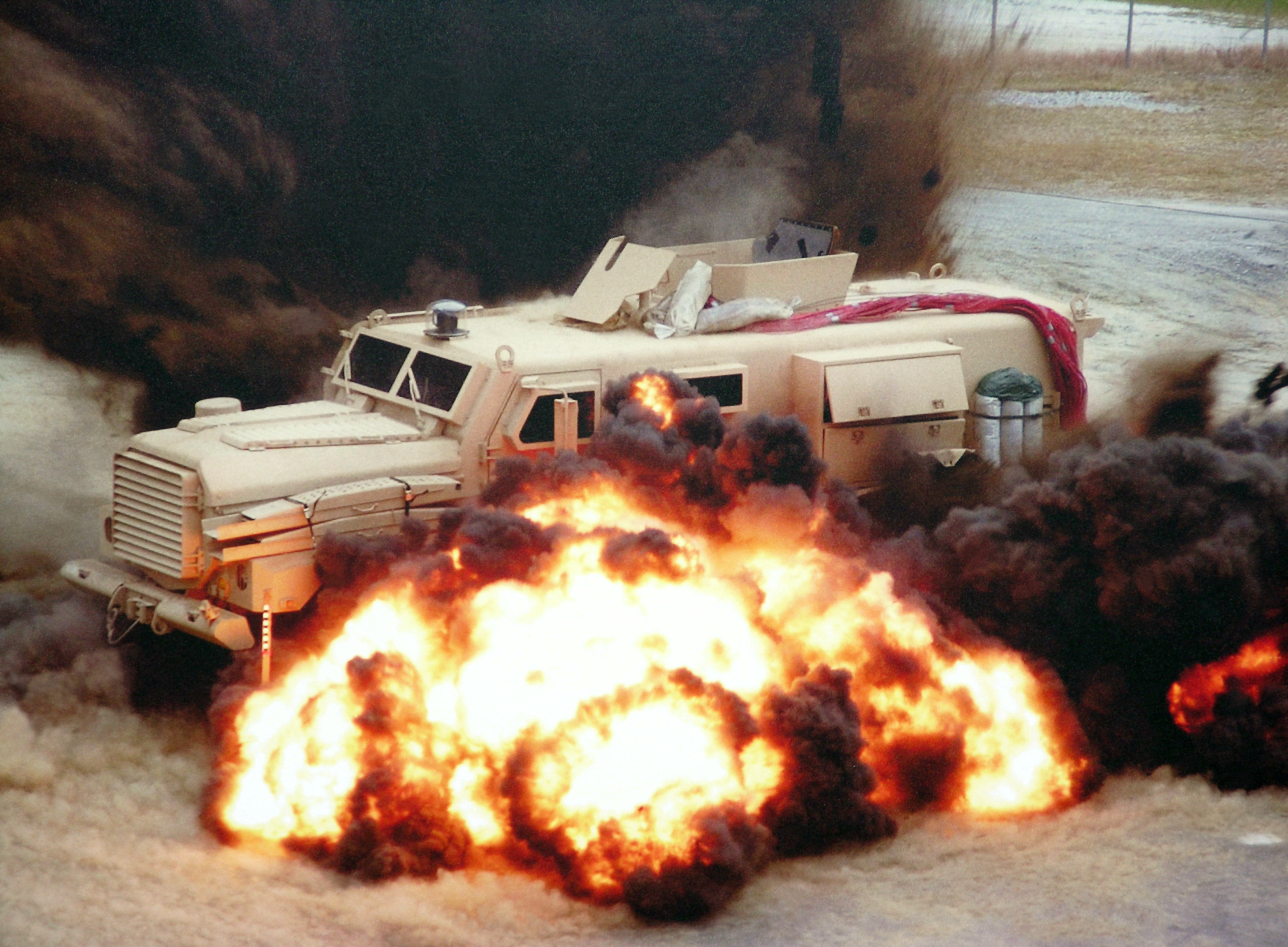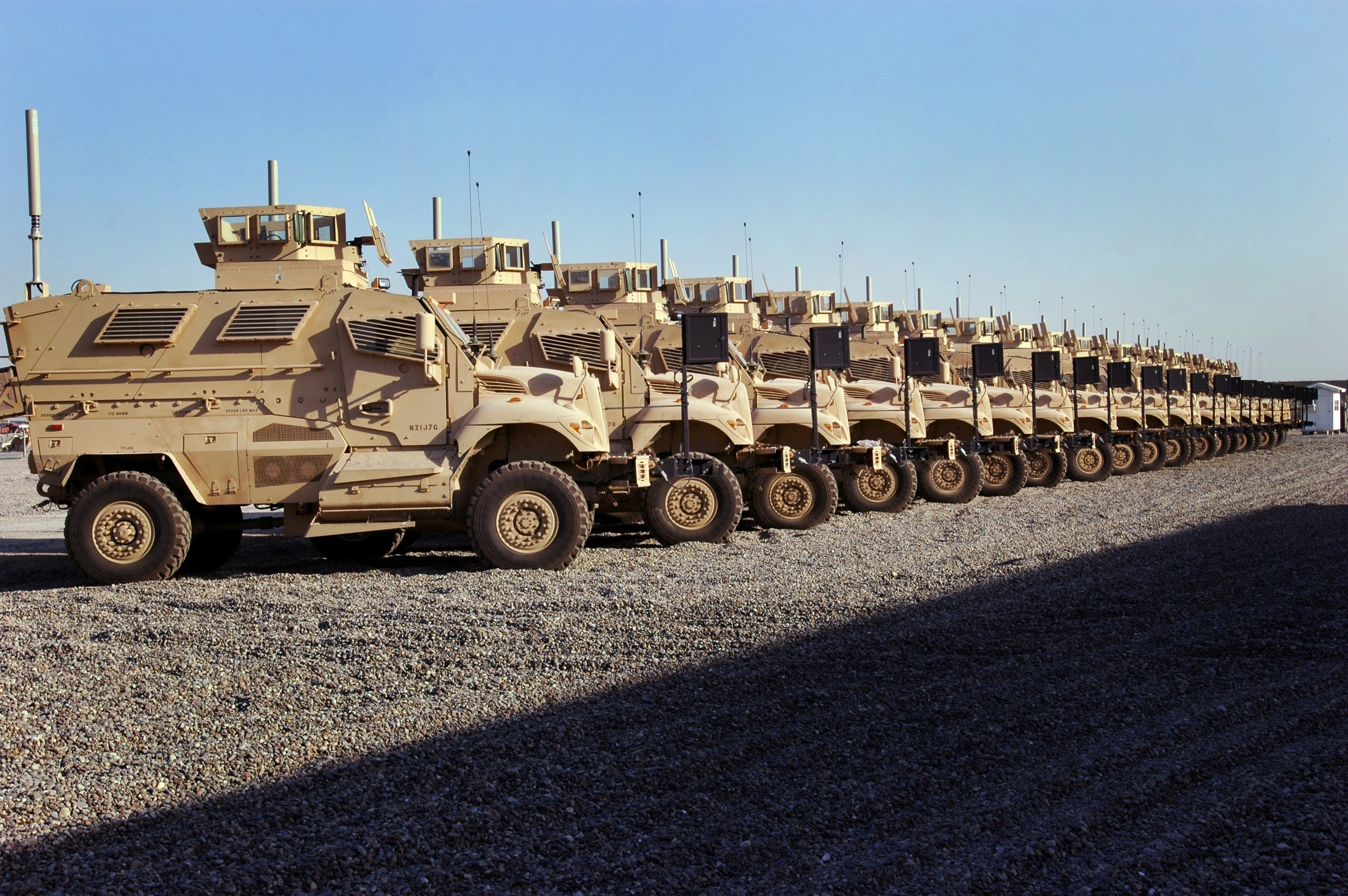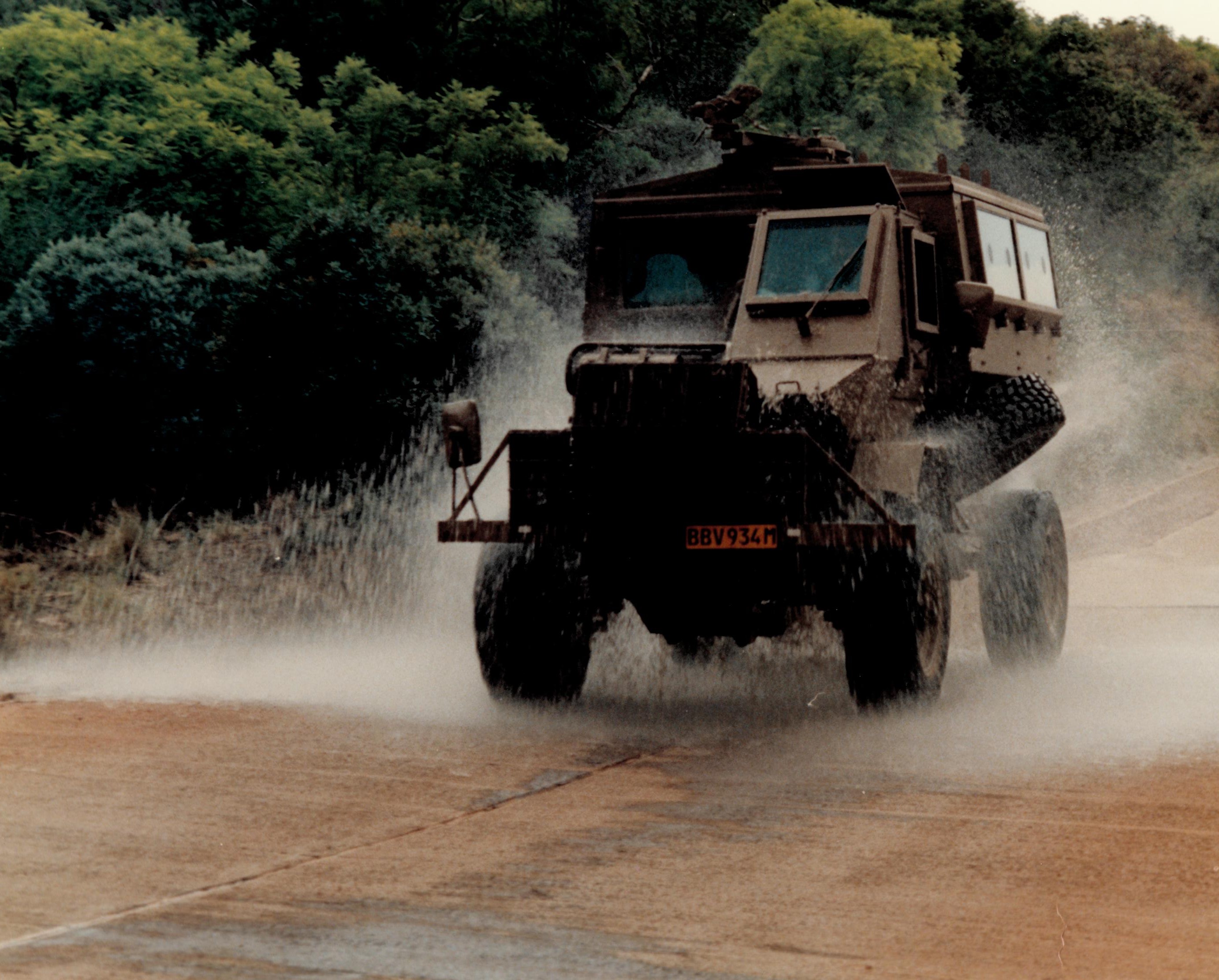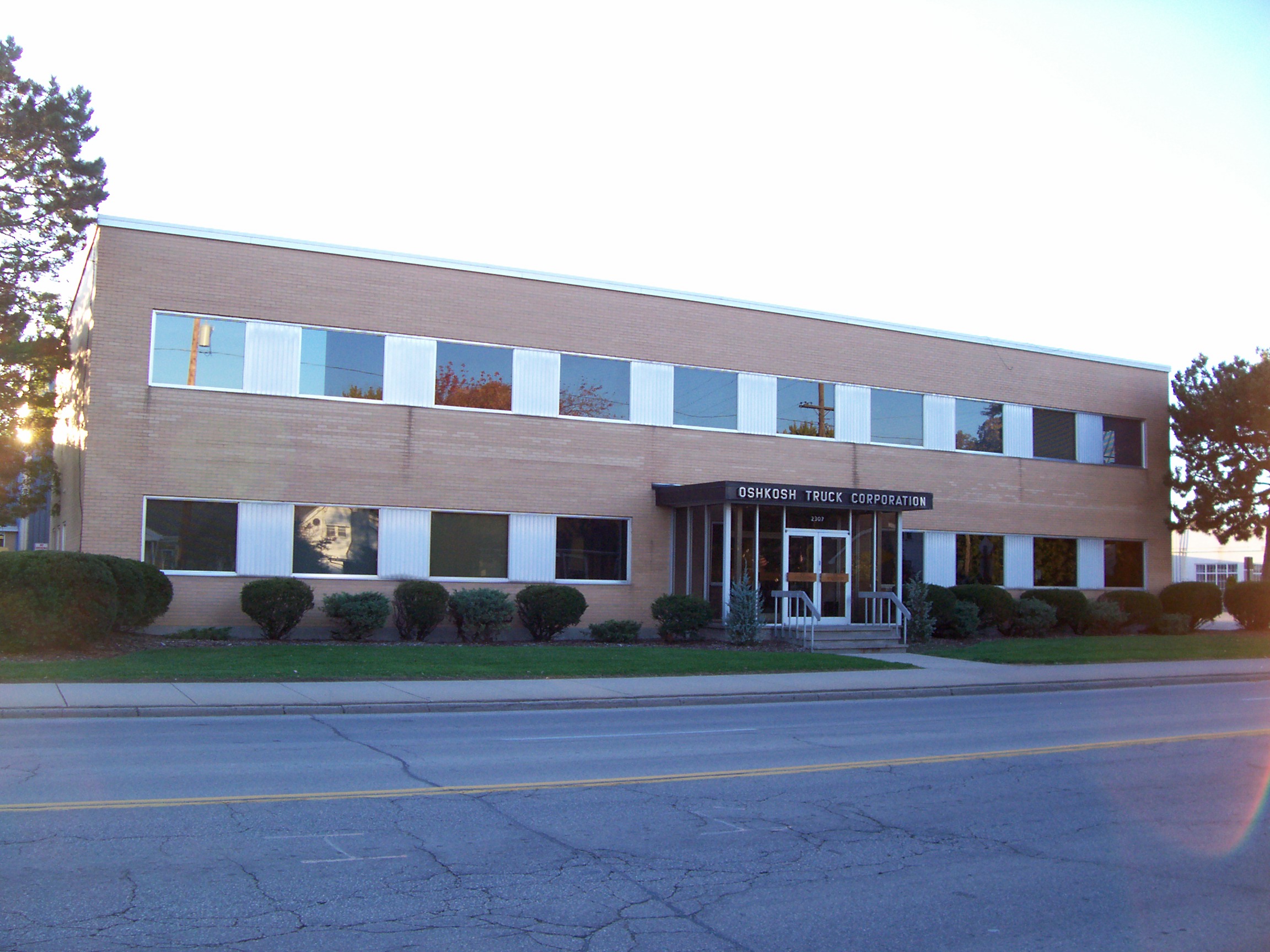|
MRAP
Mine-Resistant Ambush Protected (MRAP; ) is a term for United States Armed Forces, United States military light tactical vehicles produced as part of the MRAP program that are designed specifically to withstand improvised explosive device (IED) attacks and ambushes. The United States Department of Defense MRAP program began in 2007 as a response to the increased threat of IEDs during the Iraq War. From 2007 until 2012, the MRAP program deployed more than 12,000 vehicles in the Iraq War, War in Iraq and War in Afghanistan (2001–present), War in Afghanistan. Production of MRAP vehicles officially ended in 2012. This was followed by the Oshkosh M-ATV, MRAP All Terrain (M-ATV) vehicle. In 2015, Oshkosh Corporation was awarded a contract to build the Oshkosh L-ATV as the Joint Light Tactical Vehicle, a lighter mine-resistant vehicle to replace the Humvee in combat roles and supplement the M-ATV. History Light armored vehicles designed specifically to resist land mines were f ... [...More Info...] [...Related Items...] OR: [Wikipedia] [Google] [Baidu] |
MRAP04
Mine-Resistant Ambush Protected (MRAP; ) is a term for United States military light tactical vehicles produced as part of the MRAP program that are designed specifically to withstand improvised explosive device (IED) attacks and ambushes. The United States Department of Defense MRAP program began in 2007 as a response to the increased threat of IEDs during the Iraq War. From 2007 until 2012, the MRAP program deployed more than 12,000 vehicles in the War in Iraq and War in Afghanistan. Production of MRAP vehicles officially ended in 2012. This was followed by the MRAP All Terrain (M-ATV) vehicle. In 2015, Oshkosh Corporation was awarded a contract to build the Oshkosh L-ATV as the Joint Light Tactical Vehicle, a lighter mine-resistant vehicle to replace the Humvee in combat roles and supplement the M-ATV. History Light armored vehicles designed specifically to resist land mines were first introduced in specialized vehicles in the 1970s by the Rhodesian Army, and furt ... [...More Info...] [...Related Items...] OR: [Wikipedia] [Google] [Baidu] |
Oshkosh M-ATV
The Oshkosh M-ATV is a Mine-Resistant Ambush Protected (MRAP) vehicle developed by the Oshkosh Corporation for the MRAP All Terrain Vehicle (M-ATV) program. Intended to replace M1114 HMMWVs (Humvee), it is designed to provide the same levels of protection as the larger and heavier previous MRAPs, but with improved mobility.Tegler, Eric"Oshkosh M-ATV - Specialty File". ''Car and Driver magazine'', January 2010. History Requirements and selection In the summer of 2008, the U.S. Department of Defense (DoD) began to examine the possibility of developing and procuring a lighter-weight, all-terrain capable MRAP variant to address the poor roads and difficult terrain of Afghanistan. Source selection activity considered responses from more than 20 companies to a Request for Information (RFI)/market survey dated 21 August 2008 and in mid-November 2008 the U.S. government issued a pre-solicitation for an M-ATV. In early December 2008 the M-ATV formal Request for Proposals (RFP) was iss ... [...More Info...] [...Related Items...] OR: [Wikipedia] [Google] [Baidu] |
Oshkosh L-ATV
The Oshkosh L-ATV (Light Combat Tactical All-Terrain Vehicle) is a light utility/combat multi-role vehicle that won the US military's Army-led Joint Light Tactical Vehicle (JLTV) program. In the very early stages of the program it was suggested that JLTV would replace the AM General High Mobility Multi-purpose Wheeled Vehicle (HMMWV) on a one-for-one basis. It is now suggested that the JLTV will part-replace the HMMWV, not replace it on a like-for-like basis. The L-ATV was designed to deliver a level of protection comparable to that of heavier and less maneuverable Mine Resistant Ambush Protected (MRAP) class designs, these having more protection from blast than up-armored HMMWVs which they were delivered to replace on deployed operations. On 25 August 2015, the L-ATV was selected as the winner of the JLTV program. [...More Info...] [...Related Items...] OR: [Wikipedia] [Google] [Baidu] |
Infantry Mobility Vehicle
An infantry mobility vehicle (IMV) is a wheeled armored personnel carrier (APC) serving as a military patrol, reconnaissance or security vehicle. Examples include the ATF Dingo, Iveco LMV, Oshkosh M-ATV, AMZ Dzik, AMZ Tur, Mungo ESK, and Bushmaster IMV. This term also applies to those vehicles fielded as part of the MRAP program. IMVs were developed in response to the threats of modern warfare, with an emphasis on crew protection and mine-resistance. Similar vehicles existed long before the term IMV was coined, such as the French VAB and South African Buffel. The term is coming more into use to differentiate light 4x4 wheeled APCs from the traditional 6x6 and 8x8 wheeled APCs. The up-armored M1114 Humvee variant can be seen as an adaptation of the unarmoured Humvee to serve in the IMV role. Etymology In 1994, the Australian Department of Defence identified the need to mobilise infantry through the acquisition of unprotected and protected vehicles. This eventually ... [...More Info...] [...Related Items...] OR: [Wikipedia] [Google] [Baidu] |
Humvee
The High Mobility Multipurpose Wheeled Vehicle (HMMWV; colloquial: Humvee) is a family of light, four-wheel drive, military trucks and utility vehicles produced by AM General. It has largely supplanted the roles previously performed by the original jeep, and others such as the Vietnam War-era M151 jeep, the M561 "Gama Goat", their M718A1 and M792 ambulance versions, the Commercial Utility Cargo Vehicle, and other light trucks. Primarily used by the United States military, it is also used by numerous other countries and organizations and even in civilian adaptations. The Humvee saw widespread use in the Gulf War of 1991, where it navigated the treacherous desert terrain; this usage helped to inspire civilian Hummer versions. The vehicle's original unarmored design was later seen to be inadequate. The vehicle was found to be particularly vulnerable to improvised explosive devices in the Iraq War. The U.S. hastily up-armored select models and replaced front-line units wi ... [...More Info...] [...Related Items...] OR: [Wikipedia] [Google] [Baidu] |
Joint Light Tactical Vehicle
The Joint Light Tactical Vehicle (JLTV) is a United States military (specifically U.S. Army, U.S. Marine Corps) and United States Special Operations Command program to partially replace the Humvee fleet with a family of more survivable vehicles having a greater payload. Early studies for the JLTV program were approved in 2006. The JLTV program incorporates lessons learned from the earlier Future Tactical Truck Systems program and other associated efforts. The JLTV program has evolved considerably throughout various development phases and milestones including required numbers and pricing. Variants are capable of performing armament carrier, utility, command and control (shelter), ambulance, reconnaissance and a variety of other tactical and logistic support roles. JLTV follows the U.S. Army's Long Term Armor Strategy with kits for two levels of armor protection. Oshkosh's L-ATV was selected as the winner of the JLTV program in August 2015 and awarded an initial production co ... [...More Info...] [...Related Items...] OR: [Wikipedia] [Google] [Baidu] |
Casspir
The Casspir is a Mine-Resistant Ambush Protected Vehicle that has been in use in South Africa since the 1980s. It is a four-wheeled, four-wheel drive vehicle, used for transport of troops. It can hold a crew of two, plus 12 additional soldiers and associated equipment. The Casspir was unique in design when launched, providing for passive mine defence. The main armoured steel body of the vehicle is raised high above the ground, so when a mine is detonated, the explosion is less likely to damage the crew compartment and kill the occupants. The cross-section of the hull is V-shaped (V-hull), directing the force of the explosion outwards, further protecting the occupants. The vehicle also offers crew protection from small arms fire. The capabilities of the Casspir were the basis of the outline capabilities required by the U.S. Marines' for their Mine Resistant Ambush Protected or MRAP vehicle project. Design history The name 'Casspir' is an anagram of the abbreviations of the cust ... [...More Info...] [...Related Items...] OR: [Wikipedia] [Google] [Baidu] |
V-hull
The V-hull is a type of vehicle armor design used on wheeled armored personnel carriers (APCs), infantry mobility vehicles, infantry fighting vehicles (IFVs) and MRAPs. The design originated in the 1970s with vehicles such as the iconic Casspir used extensively during the South African Border War, Leopard security vehicle used in the Rhodesian Bush War and South African armored vehicle company Land Systems OMCs and Buffels. Design The purpose of V-hulls is to increase vehicle and crew survivability by deflecting an upward directed blast from a landmine (or Improvised Explosive Device) away from the vehicle, while also presenting a sloped armor face. By presenting its armor at an angle, it increases the amount of material a ballistic projectile must pass through in order to penetrate the vehicle, and increases the chance of deflection. V-hulls are incorporated in armored vehicle designs in several different ways. Many vehicles, such as the BAE Systems RG-33 incorporate the ... [...More Info...] [...Related Items...] OR: [Wikipedia] [Google] [Baidu] |
Buffel
The Buffel (English: ''Buffalo'') is an infantry mobility vehicle used by the South African Defence Force during the South African Border War. The Buffel was also used as an armoured fighting vehicle and proved itself in this role. It replaced the older Bedford RL-based Hippo APC and itself was replaced by the Mamba from 1995 in South Africa, but remains in use elsewhere, notably Sri Lanka. Production history The Buffel was the first truly effective landmine-protected armored personnel carrier to enter service anywhere. The South African Army began deploying it in the operational area from 1978. The Buffel was an improvement over the Bosvark which offered little protection to the driver. In 1974, 54 Mercedes-Benz Unimog 416-162 chassis had been hastily converted into Bosvarks by 61 Base Workshops in Pretoria. The Bosvark offered limited landmine protection to the crew, but compensated for this with good off-road mobility. It is estimated that around 2,400 Buffels were deli ... [...More Info...] [...Related Items...] OR: [Wikipedia] [Google] [Baidu] |
Hippo APC
The Hippo is a South African armoured personnel carrier. Specially designed to be mine resistant, it can carry ten infantrymen and a crew of two. The vehicle's remote-operated turret mounts dual 7.62mm machine guns, but like other improvised fighting vehicles, it is only lightly protected against ballistic threats. Development history An interim solution adopted to deal with the threat of land mines deployed by the South West African People's Organization (SWAPO) in northern Ovamboland, the Hippo was simply a blastproof hull fitted to a Bedford RL chassis. Similar to the BTR-152, it offered a staggered troop compartment with seating facing inwards. Vision was restricted to narrow plate glass windows. This layout was universally unpopular and later corrected with the Buffel. There were firing ports for the occupants and a powered machine gun turret could be braced on the open top, though these were seldom fitted. Passengers and crew debussed from a rear deck. The Hippo Mk1-R ... [...More Info...] [...Related Items...] OR: [Wikipedia] [Google] [Baidu] |
Oshkosh Corporation
Oshkosh Corporation, formerly Oshkosh Truck, is an American industrial company that designs and builds specialty trucks, military vehicles, truck bodies, airport fire apparatus, and access equipment. The corporation also owns Pierce Manufacturing, a fire apparatus manufacturer in Appleton, Wisconsin, and JLG Industries, a leading manufacturer of lift equipment, including aerial lifts, boom lifts, scissor lifts, telehandlers and low-level access lifts. Based in Oshkosh, Wisconsin, the company employs approximately 15,000 people around the world at 130 facilities in 24 countries. It is organized in four primary business groups: access equipment, defense, fire and emergency, and commercial. History Founded in 1917 as the Wisconsin Duplex Auto Company, the company was created to build a severe-duty four-wheel-drive truck. After the first prototype was built, the company began to develop rapidly. This first four-wheel-drive truck, known today as "Old Betsy", is still owned by ... [...More Info...] [...Related Items...] OR: [Wikipedia] [Google] [Baidu] |
Land Mine
A land mine is an explosive device concealed under or on the ground and designed to destroy or disable enemy targets, ranging from combatants to vehicles and tanks, as they pass over or near it. Such a device is typically detonated automatically by way of pressure when a target steps on it or drives over it, although other detonation mechanisms are also sometimes used. A land mine may cause damage by direct blast effect, by fragments that are thrown by the blast, or by both. Landmines are typically laid throughout an area, creating a ''minefield'' which is dangerous to cross. The use of land mines is controversial because of their potential as indiscriminate weapons. They can remain dangerous many years after a conflict has ended, harming civilians and the economy. Seventy-eight countries are contaminated with land mines and 15,000–20,000 people are killed every year while many more are injured. Approximately 80% of land mine casualties are civilians, with children as the ... [...More Info...] [...Related Items...] OR: [Wikipedia] [Google] [Baidu] |









